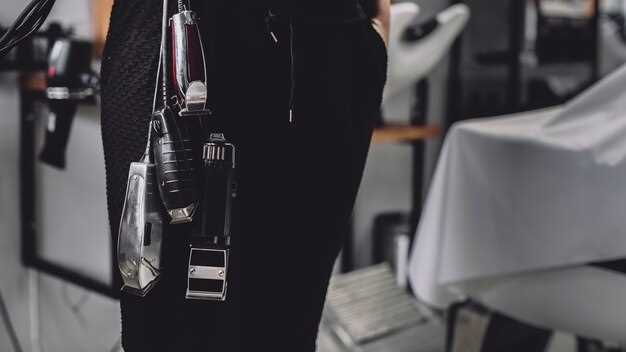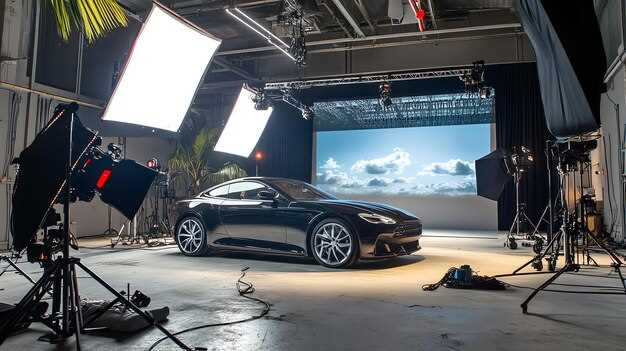

In the world of automotive events, the auto show stands out as a premier showcase for the latest innovations, designs, and technologies that define the car industry. From manufacturers unveiling their latest models to enthusiasts gathering to witness automotive excellence, these events play a critical role in the consumer market. However, what many attendees often overlook are the intricate details involved in setting up such a grand display.
Behind the scenes, a dedicated team works tirelessly to transform expansive convention centers into vibrant arenas that feature stunning vehicles. The process begins long before the doors open to the public, requiring meticulous planning and coordination among various departments. Logistics, lighting, and layout are just a few aspects that must be harmonized to create an immersive experience for visitors.
Every car showcased at the event has a story to tell, from its design process to the engineering marvels that lie beneath its surface. Understanding the setup process not only enhances the appreciation of the vehicles being showcased, but also highlights the effort and creativity that go into presenting them in the best possible light. Dive into the world of auto show setup and discover the dedication that makes these events truly unforgettable.
Key Steps in Planning Car Showcase Layout

Planning the layout of a car showcase is crucial for ensuring a successful event. Proper logistics play a significant role in maximizing visitor experience while effectively showcasing the vehicles. Here are the essential steps to consider:
1. Define the Objectives: Start by clarifying the goals of the car showcase. Whether it’s to launch a new model, increase brand visibility, or drive sales, knowing the objectives will guide the design and flow of the layout.
2. Analyze Space Requirements: Evaluate the venue and determine the space needed for each car. Consider not only the size of the vehicles but also the space required for attendee movement, display elements, and interactive installations.
3. Create a Floor Plan: Develop a detailed floor plan that aligns with your objectives. The layout should facilitate easy navigation while highlighting key cars. Use software tools if available for precise measurements and visualizations.
4. Plan for Traffic Flow: Consider how attendees will enter, move through, and exit the showcase. Designate clear pathways to prevent congestion and ensure that visitors can easily access all displayed cars. Incorporating signage can enhance wayfinding.
5. Integrate Technology: Use technology to enhance the showcase experience. Consider interactive displays, augmented reality features, or mobile apps that can provide additional information about each car, enriching attendee engagement.
6. Logistics Coordination: Coordinate logistics to ensure smooth execution. This includes transportation of vehicles to the venue, setting up displays, and managing the timing of vehicle unveilings. Effective communication with all stakeholders is essential.
7. Evaluate and Adjust: After the showcase, gather feedback and evaluate the layout’s effectiveness. Identifying successes and areas for improvement will be invaluable for future events. Continuous refinement of the layout will enhance audience engagement over time.
By carefully considering these key steps, organizers can create a compelling car showcase layout that engages visitors and highlights the vehicles effectively, ensuring a memorable event experience.
Managing Event Logistics for Maximum Visitor Engagement

Effective management of event logistics is crucial for maximizing visitor engagement at an auto show. The intricacies involved in organizing such a large-scale showcase require meticulous planning and execution to ensure that all aspects work harmoniously together.
First and foremost, a well-defined layout is essential. This includes strategically placing exhibits and attractions to create natural flow and encourage visitors to explore the entire venue. It is vital to consider sightlines, accessibility, and the overall visitor experience when designing the space.
Moreover, timing plays a significant role in logistics management. Scheduling activities, such as presentations or demonstrations, should be optimized to avoid overcrowding and allow sufficient time for attendees to interact with exhibits. Clear timelines help staff and vendors work efficiently, reducing confusion and enhancing visitor satisfaction.
Communication is another critical component. Ensuring that all team members, from security to sales staff, are aligned in their messages and responsibilities fosters a seamless experience for visitors. Adequate signage and information stations can guide attendees throughout the event, enhancing their understanding of various showcases.
Technology integration also elevates engagement. Mobile apps or interactive kiosks can provide real-time updates, schedules, and maps, ensuring that visitors maximize their time at the show. Utilizing data analytics to track visitor behavior can further inform future logistics planning, enhancing the overall effectiveness of the event.
Finally, post-event follow-up allows organizers to assess the success of their logistics strategies. Gathering feedback from attendees can spotlight areas for future improvement while recognizing successful elements to replicate in subsequent showcases. By focusing on comprehensive logistics management, an auto show can deliver a memorable experience that keeps visitors engaged and coming back for more.
Coordinating Vendor Partnerships for Successful Displays
Successful auto shows rely heavily on efficient coordination with vendor partners to create impressive car showcases. Establishing clear communication channels is essential for aligning goals and expectations between the event organizers and vendors. Early discussions should cover key aspects such as display designs, promotional materials, and logistical support.
Engaging with vendors early in the planning process allows for effective collaboration on space allocation and layout. Vendors often have unique insights into their products that can enhance the event’s overall aesthetic. Organizers should encourage vendors to propose innovative display concepts that highlight their cars in the best possible way.
Moreover, selecting vendors who understand the essence of the event can lead to more cohesive storytelling throughout the showcase. Partnerships with experienced vendors can enhance the technical aspects of the display, such as lighting and digital signage, creating a captivating atmosphere for attendees.
Another crucial element is ensuring timely delivery of all materials. Coordinating schedules for setup and breakdown is essential to avoid last-minute complications. All parties involved must have a clear timeline, detailing what is expected and when it should be completed to ensure a seamless event experience.
Finally, maintaining an open line of communication during the event itself allows for real-time problem-solving, ensuring that any issues are addressed promptly. By fostering strong relationships with vendor partners and emphasizing collaboration, auto shows can leave a lasting impression with their showcases, ultimately leading to successful events.






